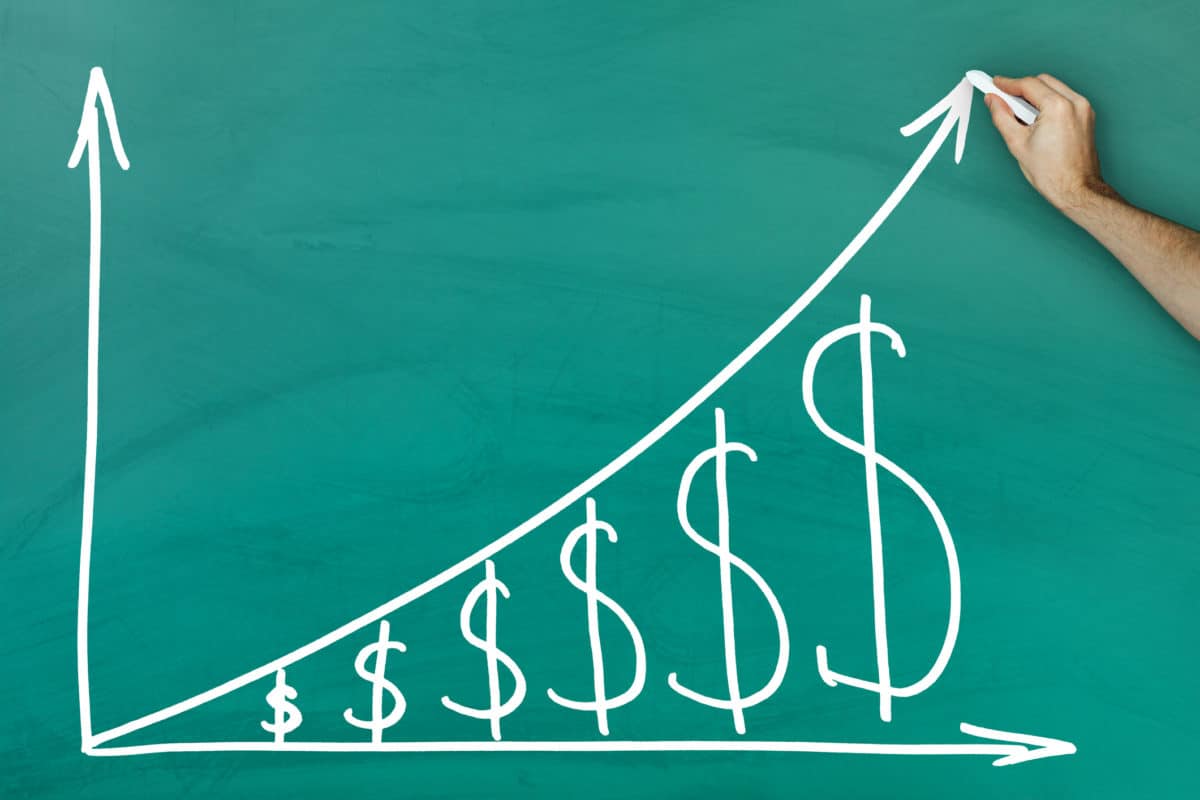You can earn the amount you want to earn from the stock market with the right strategy. While it is true that stocks are unpredictable, dividend stocks bring some degree of stability to them. No degree of planning can protect you from a macro-level crisis, but a diversified investment pool can help you offset losses from one stock with profit from another.
How to earn $10,000 in annual passive income
You could consider building a portfolio of five to six passive income stocks that offer a dividend-reinvestment plan (DRIP). Invest $10,000 in each of them and let the returns compound. The longer you stay invested, the better. A 15-17-year investment horizon could compound your one-time $10,000 investment into $10,000 in annual passive income.
And if you want to know which stock will compound your money faster, the answer lies in the dividend-growth rate. Look for stocks that give higher dividend compounded annual growth rate (CAGR) and have a relatively stable stock price.
The best example is Manulife Financial (TSX:MFC), an insurance and financial services provider. The stock is trading near its 16-year high at around $40, making it an expensive bet. But if you look from a 15-year perspective, the stock price is not that important in a dividend stock. The company has been growing its dividend at a 10-year CAGR of 10.8%. Because of its high stock price, its dividend yield is only 3.99%.
Manulife stock generally trades in the $20-$26 range. A $40 price is not sustainable, and the stock will likely fall from here as the valuations are expensive. If you invest $10,000 in this stock now or when the stock price falls, the DRIP can help you compound your returns.
Compounding one-time $10,000 into an annual $10,000 passive income
Based on the past 15 years of the stock’s behaviour, I made some assumptions:
- Manulife slows its dividend CAGR to 9% in the next 10-15 years.
- Its stock price gradually falls to $35 and then $30 in the long term.
- And the company continues its DRIP.
Based on these assumptions, a $10,000 investment now, when it trades at its high, can buy you 249 shares that will give $99.6 in quarterly dividends in 2024 (with only one quarter left for year-end).
| Year | MFC Stock Price | New DRIP Shares Added | Total Share Count | MFC Dividend per Share (9% CAGR) | Total Dividend Amount |
| 2024 | $40.09 | 249.00 | 249.00 | $1.600 | $99.60 |
| 2025 | $40.00 | 2.49 | 251.49 | $1.744 | $438.60 |
| 2026 | $35.00 | 12.53 | 264.02 | $1.901 | $501.89 |
| 2027 | $35.00 | 14.34 | 278.36 | $2.072 | $576.78 |
| 2028 | $35.00 | 16.48 | 294.84 | $2.259 | $665.91 |
| 2029 | $30.00 | 22.20 | 317.04 | $2.462 | $780.48 |
| 2030 | $30.00 | 26.02 | 343.05 | $2.683 | $920.54 |
| Continues | |||||
| 2039 | $30.00 | 154.71 | 1,022.74 | $5.828 | $5,960.53 |
| 2040 | $30.00 | 198.68 | 1,221.43 | $6.352 | $7,759.11 |
| 2041 | $30.00 | 258.64 | 1,480.07 | $6.924 | $10,248.29 |
Manulife’s 9% dividend CAGR is higher than the TSX Composite Index’s 7% compounded annual return. In 2025, a $438.6 annual dividend will buy you 12.53 DRIP shares at $35/share. These values are rough estimates. Your dividend will compound quarterly. I used annual compounding for ease of calculation and to incorporate volatility. If the stock price falls below $35, you can get more DRIP shares.
If this cycle continues, by 2041, you will have 1,480 shares of Manulife, and each share will pay $6.9 in annual dividends. That brings your annual passive income to more than $10,000. These earnings could accelerate in some years and slow in others.
When to hold and sell the stock
As long as the assumption of a 9% dividend CAGR holds, you can continue owning the stock. If future developments result in the company cutting dividends, with no signs of returning to dividend growth, you could consider exiting the stock.
The primary reason for investing in Manulife is dividend growth, and when that is gone, it is time to book profit and reinvest the money in the next passive-income opportunity. Warren Buffett exited his position in airline stocks in 2020, as the reason for his investment, the operating efficiency of airlines, was gone. Instead of timing the market, you can hold the stock for a reason and let compounding do the rest.








